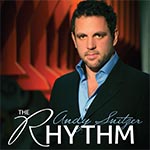May 2013
Here's something rare and fascinating: an atmospheric album with some bite to it. Andy Snitzer's first two albums, released in the mid 90's, had some real kick to them and a sound that evoked a lot of comparison with David Sanborn. Those were followed the beautifully melodic
Some Quiet Place, which had acoustic rock undercurrents that didn't mesh with the sound radio was seeking at the time and was left suspended in obscurity. He then delivered several albums that were more in the straightahead vein before doing a 180 degree spin into ambient chill and finding his way back onto the contemporary/smooth charts with 2011's
Traveler. Snitzer has long been fascinated with the chill and electronica type sounds that can be created in the studio and for that album his sax was subdued, embedded in lush atmospherics. He and co-producer David Mann (best known as part of Special EFX and for several solo albums) are still exploring the sonic wonderland that was the foundation of that album but this time the sax is upfront, there are energized improvisational passages, and most of the songs feature Snitzer's sax playing multiple parts, trumpet, or with a full horn section. The juxtaposition is delicious, especially when the dynamics of his solo shift in a direction seemingly opposite from the underlying textures of the song. It creates a completely different space where power meets mellow.
None of these songs are covers and none are even derivative, but they all feel comfortably familiar, even on first listen. That can be credited to Snitzer's songwriting skills and possibly the influence of the pop and rock artists he has worked with – he is part of Paul Simon's touring band, played with the Rolling Stones, and has worked with Bon Jovi, among others. These songs have irresistible hooks with melody lines that get stuck in your head to the point that you start making up words so you can sing along. “Candy,” the opener and the song that was sent to radio, is a perfect example. A lot of instrumentals don't have a well defined verse and chorus. This one does but it's not a straitjacket, the musicians play inside it and around it, you hear flashes of instrumental bravado and atmospheric sounds but the essence of the song always returns. The same can be said of the next track, “Velvet,” with a melody that has a slightly Grover-ish feel to it. Then there is “Devotion,” a song that you could literally fall into – mostly acoustic, sparse, elegant, and calming with a sax line that manages to be both anthemic and serene. “No Exit” finds him layering different sax textures in a way that makes it seem like they are singing duets and “Siren's Song” features jazzy improvisation over a soulful horn section bed. Through all of this there are the sounds – these atmospheric electronic effects that show up at precisely the right time to spice up a song, shift the mood, or simmer under it, catching your ears at different places with each listen. Upfront, this is a contemporary jazz album but the foundation is texture and groove, both in the dynamics and range of the arrangements and in the sonic underpinnings.
There are a lot of opposites in play here. There are chilled out textures and power solos, catchy melodies and flights of jazz improvisation, acoustic pop-rock arrangements with electronica sensibilities. It takes gifted musicians and studio technicians to make this cohesive and Snitzer, Mann, and a cast of session heavyhitters are up to the task. It is rare for an album that has so many sonic bells and whistles to have such an all pervasive sense of warmth. This music embraces you and calls you to create a mood instead of overwhelming you with glossy production. In front of it all there is Snitzer, who does not hold back. He plays with taste and control but he never plays it safe.

